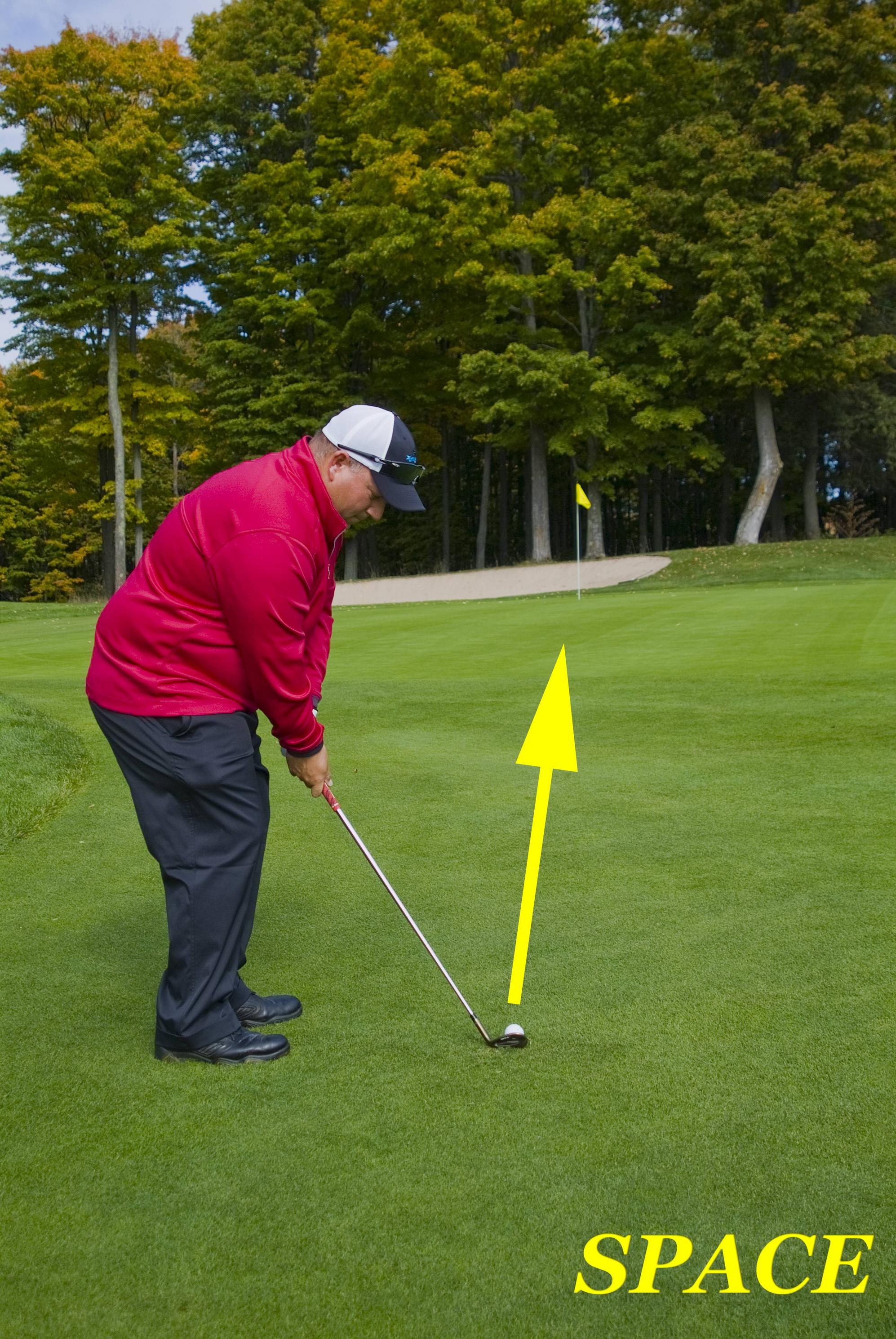
The game of golf is only as good as the tee shot. A wayward shot can derail a par or better round. Tee shots can be challenging, especially when there are small landing areas. If you have the right management skills, you can hit a better shot, and avoid trouble, however. With the right strategy, you can also set yourself up for a birdie opportunity.
OB vs. Provisional
Knowing when to play OB balls or provisional balls is essential for golfers. If the original ball is out-of-bounds or lost, golfers will use provisionals. Knowing when to use one can save time and frustration. If a golfer thinks their ball is OB, they can hit a provisional.
Golfers often miss the mark when hitting a tee shot because they are unaware of the OB/provisional rule. Many golfers are unaware that they lost their ball. Because they don't want the game to be slowed down by returning to the tee, they do not hit a provisional.

Set the ball high on a tee.
A golf ball can be placed high or low on the tee. The distance of the ball and the club used will affect the height of your tee. Teeping the ball either too high (or too low) can lead to excessive leaning back. This can also affect the swing plane. It is best to place your body behind the ball when you contact it. You can hit the ball with either topspin (or backspin) if you set it up correctly.
The most frustrating mistake a golfer could make is to top the ball. This occurs when the club is not lowered to the ball. This can cause the golf club to catch as it rises. The problem must be understood by the golfer before he can fix it.
Positioning the ball towards the toe
Many golfers use the step-by, step system to determine the correct ball position and take a stance. This is an important technique for improving accuracy and consistency in your swings. It will be much easier to repeat the motion if the ball is correctly placed. This will allow you to hit more shots with greater accuracy and consistency.
The ball's flight speed and spin are often affected by the ball position. The ball position will also impact the time required to square the face. The best position for hitting the ball is important regardless of whether it's from a tee or the ground.

Swinging your tee shot
You have a variety of stances when you swing your tee shot. It's best to start with one you find comfortable and then modify it to make it more effective. This will allow for you to stay relaxed and properly swing the club. Most golfers use a driver for tee shots. This type of club is designed to send the ball farther, but it can also magnify any flaws you have in your swing.
The tee shot will be the most important shot you make on the course. To get a good score, you must hit the ball correctly and with enough power. To do this, you must know how to properly swing a golf tee shot.
FAQ
How can I learn to play the game of golf?
Learning how to play the game of golf takes practice and patience. It is possible to improve your game with practice. These are some tips that will help you improve your game.
-
It is essential to practice regularly. Golf requires constant attention and concentration. You won't improve your golf skills if you don’t practice enough.
-
Play with people who play. Playing with other people helps you develop your own style of play.
-
Before you practice, learn about golf. This will give an overview of your needs.
-
Don't try to master everything all at once. Begin by focusing your attention on one aspect. Try focusing on one area of your game. For example, you might try to improve your putting or learn how to chip. Once you feel confident in this area, move on to another part of your game.
-
Take lessons. Take lessons. They can help you improve your posture, swing speed and stance.
-
Try new techniques. Experiment with new grips and stances.
-
Keep track of your progress. Keep track and log your scores. You will be able to identify your areas of improvement.
-
Join a local golf club. Many clubs offer lessons for free. These clubs usually have friendly members who are happy to show newcomers the ropes.
-
Find a coach. Professional coaches can provide coaching in specific areas.
What is a Bogey?
A bogey is a goal for golfers. It is not actually part of the game but rather a way of keeping score. The hole is won if the player shoots closest the number.
Jock HUTCHISON, the first professional player from Scotland, invented the concept of a “bogey”. The idea was conceived by Jock Hutchison, a professional golfer from Scotland.
He wanted to keep track of how he was doing against himself, so he wrote down a number on a piece of paper and stuck it to the wall above his bed. This was known as the "Hutchy Bogey."
What is a handicap, exactly?
Sometimes it can be difficult to keep up with your fellow golfers. You might also find that you struggle to score well due to your speed or slowness. To overcome these problems, you could hire a caddy to carry your bag for you.
You should still take advantage the local golf club's services if you're just starting out. They will calculate your handicap based on age, gender, height, weight, strength, and skill level.
Your handicap will then be used as a reference point when calculating your score. Your handicap will indicate which group you fall into. This will allow you to compete more effectively against players of similar abilities.
How can a golfer score points on the course?
Points are awarded according to how well a competitor performs in a competition. In golf, points can be earned in many different ways. A player may win a tournament if they score more than others. Alternatively, a player might finish second place in a tournament and receive half the prize money that was won by the winner. Also, placing third through tenth in a tournament earns you points. These extra points are known by the "strokes."
These official competitions are not the only ones that award points. There are also many unofficial events which award points to the highest performing players. If a player has previously performed well in an event, they may receive bonus points.
What are the different types?
Golf courses come in all shapes and sizes. Some courses are made for beginners, others for more experienced players.
Some golf courses are close to lakes, rivers, mountains and forests. Some are located in urban areas. You can find a variety of golf courses from public parks to private estates.
What is a par?
Par is the number needed to complete an 18-hole hole. Add up the scores of each player to get the total score.
There are 18 holes in a round of golf. Each hole is assigned a rating. The hole with the highest rating is "par 3". It is located three strokes from hole. "Par 5" is the lowest rated hole. It is five strokes away.
Statistics
- Professional golfers typically make between 60% and 70% of greens in regulation. (en.wikipedia.org)
- He shanked the first attempt, but it is estimated his second went more than 200 yards (180 m).[52]Golf courses worldwide. Below are the top 20 countries with the most golf courses as of 2019.[53]CountryNumber of (en.wikipedia.org)
- They do this by means of assessing and rating courses according to the average good score of a "bogey golfer," a player with a handicap of around 20. (en.wikipedia.org)
- They do this by means of assessing and rating courses according to the average good score of a "bogey golfer," a player with a handicap of around 20. (en.wikipedia.org)
External Links
How To
How to Get the Perfect Bunker Shot
A bunker shot refers to a type of shot in golf where your ball is directed at a spot on the green (the hole), and you aim for that spot so it doesn't bounce off the surface. This is accomplished by taking advantage on the slope of green. The goal is to direct the ball as far as possible towards hole.
The best way to reach your target point when playing golf is to find the best line. Consider factors like how far you are from your target, the terrain, whether the ball should bounce off the ground, or fly straight, as well as weather conditions.
Understanding the laws of physics is essential to executing a flawless bunker shot. You must first determine whether you are facing uphill or downward. If you are looking uphill, a drawing board is necessary. You'll need to swing with an fade if you are facing downhill. Next, calculate how fast you must move your body to stop it from bouncing off green. Measure the angle between the ball's head and the direction it is traveling. Finally, you will need to know how big the bunker is you're trying to hit.
Once you've figured these things out, you can start swinging. As you would with any other shot, swing hard enough for the ball to go past the club head. But slow enough to keep the ball from bouncing off green. Once you've found the right speed and trajectory, you can begin your approach. Approach the ball slowly until you are close enough to see the landing area. Then, take one last look at the ball before releasing it. You should have a perfect bunker shot if everything goes according to plan.